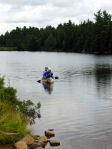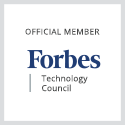I don’t know what made me do it. I don’t know what I was thinking. Chalk it up to a 6th grader wanting to get attention. Boy, did THAT happen! It was nearing the end of my 6th Grade Year. Soon, I would be heading off to Junior High. My sixth grade teacher was the first male teacher I had ever  had, he ruled with authority. He WAS authority in my school. Weeks before he had announced the Science Fair Competition. Everyone had to submit a project and everyone had to present their project to the whole 6th grade class. Today was the day!
had, he ruled with authority. He WAS authority in my school. Weeks before he had announced the Science Fair Competition. Everyone had to submit a project and everyone had to present their project to the whole 6th grade class. Today was the day!
Honestly, my project was kind of lame. It was something about perpetual motion and lighting a candle on both ends or something like earth shattering like that. After waiting through several of my classmate’s presentations, it was time for me to present. I did fine enough I suppose…until the end…until I decided to tell some outlandish story about how I had been working with my chemistry set the night before, gotten sick, had to go the hospital, was still in constant pain…and THAT is why I did the candle project. It was a doozy of a story and all B.S. Maybe I told it to impress my girl friend(s), who knows…but it gets better (or worse actually).
 After all the presentations were done, our teacher announced that he was selecting the top three projects and we would present to the entire school. Guess what? My project was selected. Man was I stoked! Too Cool! That afternoon, the whole school was gathered together including the principal. The first kid presented his project, I think it was on nuclear fission or something. The second kid’s project about the space-time continuum or some bogus thing like that. THEN, then it was my turn, me with my perpetual motion candle. When my presentation was done, my teacher spoke up from the back of the room, and told me to tell my chemistry set-hospital visit story. So, very hesitantly, I did. By the time I was done, the teacher and the principal were both in tears laughing at me so much.
After all the presentations were done, our teacher announced that he was selecting the top three projects and we would present to the entire school. Guess what? My project was selected. Man was I stoked! Too Cool! That afternoon, the whole school was gathered together including the principal. The first kid presented his project, I think it was on nuclear fission or something. The second kid’s project about the space-time continuum or some bogus thing like that. THEN, then it was my turn, me with my perpetual motion candle. When my presentation was done, my teacher spoke up from the back of the room, and told me to tell my chemistry set-hospital visit story. So, very hesitantly, I did. By the time I was done, the teacher and the principal were both in tears laughing at me so much.
Years later as I was exploring the #RooseveltRiver (2013 – The Year I Canoed with Theodore Roosevelt) from birth to age 19, some parallels and themes emerged. During these years, Roosevelt became fascinated with science and history. He was an avid reader, but not only a reader; he was a writer as well. He completed his first book by the age of 16. His father was the dominate figure in his life helping him to develop into a man. His personality set him apart and despite having very poor eyesight he excelled in boxing and outdoor activities. Toward the end of this time frame Theodore’s father passed away and had a profound impact on him. Many of the lessons of his youth and the impact on his life were evident in later years.
While our lives are not parallel, I too was an avid reader. As a teen and on into my twenties I read book after book on programming, systems design, database structures, and application life cycles. Ask my sons, I used to hold them on my lap and read to them. They are probably still scarred! I wasn’t the writer Roosevelt was, I wrote song lyrics instead of books (you see, I was going to be a rock star!). However, it was still a way to release my creative passions as did he.
The discoveries during this portion of my exploration were many and deep. Two lessons came from these discoveries. The first was related to change: my ability to embrace change, but also my ability TO change. For years I was petrified of public speaking, I could not even imagine getting up in front of a group and presenting a topic. If I were in a meeting, I would not speak up until I had time to digest everything and very methodically process what I heard. I hated that moment in a meeting when all eyes turned my way. I felt like that very embarrassed 11 year-old kid ready to crawl into a hole. As I developed in my career, I knew this was something I would have to overcome. I did this through preparation. The reason my science project was so lame was because I failed to prepare.
Roosevelt was a larger than life individual, fueled by traits like exuberance, passion, and enthusiasm. What of your traits the strongest impact on those to whom you are communicating? Think about that for awhile. Put yourself in the shoes of the “communicatee”, what comes through your from your communication style? What traits are strongest when you are communicating well? I asked several people to describe the traits that come through with me. Modesty, humility, and empathy were recurring themes. However, one jumped off the page: passion. The realization that I communicate best when I am passionate about the subject AND I let that passion show through was lesson number two for me.
Several years ago, my wife suggested I tell our Lewis and Clark story to her mom’s Rotary Club. At first, all I could see was that 11 year-old all over  again, but the more she nudged the more I warmed to the idea (this was not the only time in our relationship that she nudged me over what I thought was a cliff, only for me to learn I could fly). However, to be successful, I had to prepare. I wrote my presentation out long hand. I rehearsed, and rehearsed and rehearsed. I combined my passion with preparation and have now lost track of the number of times I have spoken in front of groups.
again, but the more she nudged the more I warmed to the idea (this was not the only time in our relationship that she nudged me over what I thought was a cliff, only for me to learn I could fly). However, to be successful, I had to prepare. I wrote my presentation out long hand. I rehearsed, and rehearsed and rehearsed. I combined my passion with preparation and have now lost track of the number of times I have spoken in front of groups.
Accenting a strength enabled me to overcome a weakness.
#RooseveltRiver is my year long exploration with Dan Miller of Historical Solutions into leadership using the backdrop of history and the life of Theodore Roosevelt. To read more in this series, select “Roosevelt River” from the Category drop down on the right.
If anything you read here or in other posts strikes a chord, I would love to hear from you. Leave a comment, hit me up on Twitter (@jtongici), find me on LinkedIn, or Google +.


 than I, I assumed it would have been either Lewis or Clark, at the very least, one of the men that accompanied them on their adventure. I knew very little about Roosevelt, but I was game. So I threw my canoe in the river and began my journey.
than I, I assumed it would have been either Lewis or Clark, at the very least, one of the men that accompanied them on their adventure. I knew very little about Roosevelt, but I was game. So I threw my canoe in the river and began my journey.
 At first there was some awkward chit-chat and bemusement, I don’t think many of them could believe we were actually on a hay ride. The further along the pathways we traveled, the polite chit-chat gave way to laughter, spirited conversation and picture taking. You could sit and watch the inner child come out. By the time, we were halfway done, there was debate about which wagon was the “cool, more fun wagon”. (Personally, I think the one I was in was the cool wagon!).
At first there was some awkward chit-chat and bemusement, I don’t think many of them could believe we were actually on a hay ride. The further along the pathways we traveled, the polite chit-chat gave way to laughter, spirited conversation and picture taking. You could sit and watch the inner child come out. By the time, we were halfway done, there was debate about which wagon was the “cool, more fun wagon”. (Personally, I think the one I was in was the cool wagon!).

